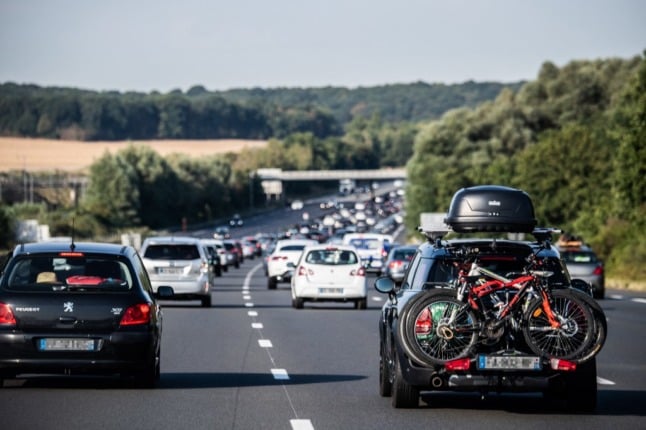The highest-level critical warning covers the whole country on Saturday, and there’s a lower-level ‘red’ alert in place on Sunday.
With temperatures set to reach the mid to high 30s nationwide in the coming week – and up to the mid-40s in many parts of southern Italy – people across the country are flocking to coastal and mountain areas.
REVEALED: The parts of Italy where Italians are going on holiday this summer
Meanwhile international tourism is reaching its peak with “a large influx of tourists from northern Europe headed to Italian beaches”, reports the Ansa news agency on Saturday,
The ‘Viabilità Italia’ official summer traffic plan drawn up between the government, emergency services and state road agency ANAS, notes particularly busy roads and dates to avoid.
For the weekend of August 7-8th, the routes expected to see the heaviest traffic include the following:
A26 Voltri – Gravellona Toce, towards Genova
A8 / A9 Milan – Laghi, towards Sesto Calende and Valico Brogeda
A4 towards Venice
A4 Venice – Trieste in the direction of Trieste
A27 Venice – Belluno
A22 towards Brenner
A12 Rome-Civitavecchia in the southerly direction
A14 Bologna – Taranto particularly on the Forlì – Cattolica section
A16 in the Avellino east-Candela section
A30 Caserta – Salerno
Anas issued a reminder that there will be a ban on heavy vehicles in force from 8-4pm on Saturday August 7th and from 7-10 pm on Sunday August 8th. Meanwhile, roadworks have been “reduced to a minimum to facilitate vehicular traffic flows,” it said.
READ ALSO: Italy has the most speed cameras in Europe, study shows
Unsurprisingly, especially busy roads are also forecast across Italy in the days around the main summer holiday, Ferragosto, when the whole country more or less completely shuts down.
Ferragosto is on August 15th, a Sunday this year, though the whole week is often taken as a holiday and heavy traffic is expected everywhere over that weekend.
The Italian authorities are urging people to avoid travelling at peak periods this summer, as not only is travelling on certain dates guaranteed to be stressful and unpleasant, but the roads will become more dangerous.
At the presentation of the official ‘Viabilità Italia’ traffic forecast in July, police chief Franco Gabrielli stressed that the frequency of road deaths in August normally increases by seven percent.
For more information, see real-time traffic information on the ANAS website and app, or call the free information hotline on 1518 (in Italian only.)



 Please whitelist us to continue reading.
Please whitelist us to continue reading.
Member comments